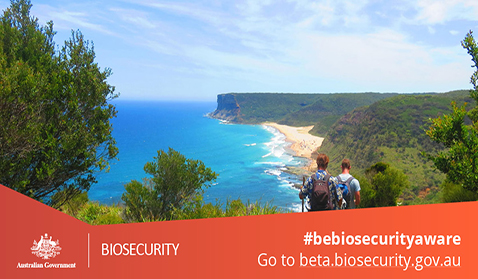The Australian Government has published a new biosecurity web site aimed at helping the general public, councils, businesses and individuals better understand how to identify and respond to biosecurity threats.
The site has been developed by the National Biosecurity Committee, to which the Australian Local Government Association is an observer, and follows an agreement by agriculture ministers in late 2018 on the need for a central hub.
Still in its early stages, beta.biosecurity.gov.au outlines responsibilities including the steps involved in reporting signs of pests and diseases on land and marine pests, and which entity to contact in each jurisdiction.
“A change in our biosecurity status could damage our reputation as a clean and green producer threatening our market access—and many Australians probably aren’t aware of this,” Agriculture Minister Bridget McKenzie said.
“If you’re an on-line shopper, an international traveller, a keen gardener or a farmer, information is tailored to your interests.”
In the business category, for example, there are biosecurity advisories specific to 16 sectors, including for importers, exporters, and primary producers.
Information for primary producers includes an overview of signs and symptoms of pests or diseases, steps a person can take, such as developing a biosecurity plan and protecting a nursery, and other resources such as farm gate signage.
Individuals travelling domestically can see information about preventing the spread of fruit fly, travelling to northern Australia, and what controls are in place for moving goods interstate.
“The Australian Government is serious about making sure the community has access to the information it needs to play its part in managing biosecurity threats,” Senator McKenzie added.
“Not knowing the rules is no excuse for doing the wrong thing—I want people to feel knowledgeable enough to do the right thing.”
Lyn O’Connell, the Agriculture Department’s Deputy Secretary and head of the biosecurity function, said the site is vital to providing biosecurity information to parties including state and territory agencies, industry, environmental groups, research bodies and other government bodies.
“You can be one of the first to explore beta.biosecurity.gov.au,” Ms O’Connell said.
“Your feedback will help us understand what does and doesn’t work across the site to build a better service.
“The website will provide information to the National Biosecurity Committee and its sub-committees, and website users can discover information about how to reduce biosecurity risks and how to report a concern.”
After the beta testing period, the site will be refined based on user feedback and data analysis, and released as a final version in late 2019.



